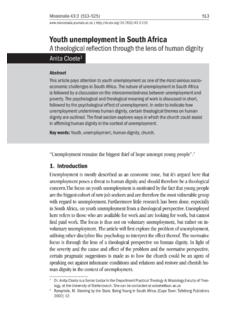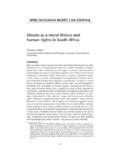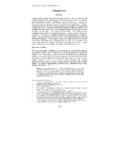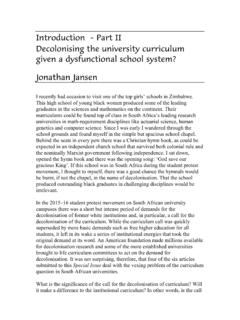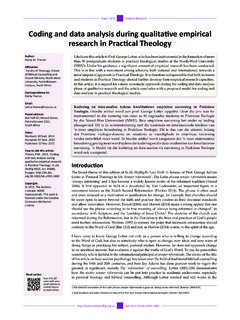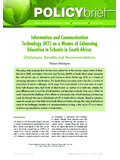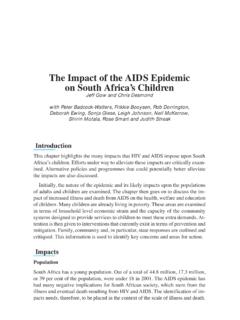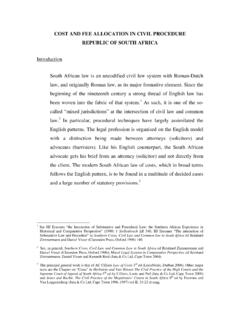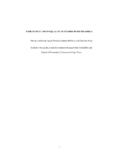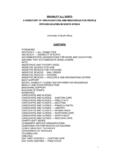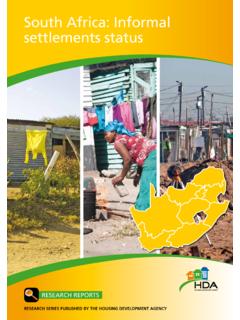Transcription of The Colonisation of South Africa: A unique case - SciELO
1 AccessHTS Teologiese Studies/Theological Studies ISSN: (Online) 2072-8050, (Print) 0259-9422 Page 1 of 8 Original ResearchRead online:Scan this QR code with your smart phone or mobile device to read :Erna Oliver1 Willem H. Oliver1 Affiliations:1 Department of Christian Spirituality, Church History and Missiology, University of South africa , South AfricaCorresponding author:Erna Oliver, 28 Dec. 2016 Accepted: 24 June 2017 Published: 31 Aug. 2017 How to cite this article:Oliver, E. & Oliver, , 2017, The Colonisation of South africa : A unique case , HTS Teologiese Studies/Theological Studies 73(3), a4498. : 2017. The Authors. Licensee: AOSIS. This work is licensed under the Creative Commons Attribution !
2 KE E: /XARRA //KE(Unity in diversity Khoi phrase on South africa s coat of arms)This article is written without the intention of entering into an argument as to whom South africa de facto belongs or the necessity of land restitution that is rife at this moment. The intention is to state the facts of the colonisation2 of South africa from a somehow different angle in order to understand the composition of this country better and to take cognition of the fact that we need to celebrate the notion of a rainbow nation more, instead of fighting for personal or political 1884 1885, the Berlin Conference (also called the Congo Conference or West africa Conference cf. Heath ) was held at the request of Portugal and organised by German chancellor, Otto von Bismarck.
3 He summoned representatives of all the major Western powers of the world to join in and decide on the control of africa . The representatives came from Austria-Hungary, Belgium, Denmark, France, the United Kingdom, Italy, the Netherlands, Portugal, Spain, Sweden-Norway, the Ottoman Empire and even the United States. This conference formed the pinnacle of the competition between all the powers for territory in africa and is commonly known as the Scramble for africa (cf. Pakenham 1991). Within half a century, Europe conquered almost the whole continent (Pakenham 1991:xxi). Having read the comprehensive book of Pakenham on how each of the countries in africa was grabbed by Imperial European powers, especially Great Britain, France, Portugal, Germany, Italy, Spain and Belgium, it becomes evident that every country in africa has a unique story about its Colonisation , even Ethiopia who was only colonised for a very short period of time by Italy (1936 1941) and Liberia who was colonised during the first half of the 19th century.
4 South africa most certainly has its own unique year 1994 was a ground-breaking year for South africa when this country became a Democracy with the ANC s Dr Nelson Mandela as the first democratically elected president. The Democracy was, however, preceded by migrations and invasions of black people for longer than a millennium, as well as a little more than three centuries of European occupation. The migrations and invasions of people groups took place from the north of the continent, moving to the South , while the Europeans occupied the country from the South . The two European countries who occupied the land were the Netherlands (1652 1795 and 1803 1806) and Great Britain (1795 1803 and 1806 1961).
5 Although South africa became a Union with its own white people government in 1910, the country was still regarded as a colony of Britain till 1961. After the Second World War, in 1948, the National Party won the elections in South africa , marking article was presented as a paper at the AHA Conference in Sydney 2015. It was done with full cognition of how History is presented in the classroom today. According to the National Curriculum Statement (Department of Education 2000), the aim of the post-apartheid curriculum is to permit the unofficial and the hidden to become visible through a commitment to the idea that historical truth can be subjected to rigorous analysis by providing opportunities for border crossing (Wilmot & Naidoo 2011:28; cf.)
6 Vestergaard 2001:24 26; Weldon 2009:177 189). terms colonised and Colonisation in this article are understood as an action or venture to establish political control over a place or land, to settle among and establish control over the indigenous people of an area and to appropriate a place or domain for one s own use (Oxford Dictionaries 2015).From the 15th century onwards, most of the countries in africa have been colonised by the European world powers, Great Britain, France, Portugal, Germany, Spain, Italy and Belgium. South africa was officially colonised in 1652. Apart from the European Colonisation being executed from the South of the continent, South africa also experienced a migration and invasion of people groups from the north.
7 The indigenous people groups, inhabiting the country long before these two groups arrived there, will be discussed as background to the rest of the article. A few factors that made the Colonisation of South africa unique within the African context will be Colonisation of South africa : A unique caseRead online:Scan this QR code with your smart phone or mobile device to read 2 of 8 Original Accessthe beginning of white Afrikaner rule in the country under the supervision of Britain. The year 1961, when South africa became a republic, witnessed the introduction of more than three decades of white Afrikaner supremacy over the black people in the country, independent of Britain (cf. Heldring & Robinson 2012).
8 This article focuses on the uniqueness of the Colonisation of South africa . The earliest inhabitants of the country will be discussed, serving as background to the rest of the article, before we take a look at the unofficial colonisers from the north and the official colonisers from the South . It needs to be stated here that:far more research has been and is still being done on the subject of colonialism and far more has been published and is still being published on it than on any other theme in African history. (Boahen 2000:16)It is therefore rather difficult to say something new on the earliest inhabitants of the southern parts of AfricaAccording to the Big Bang theory, the cosmos had its origin about 13 700 million years ago, while earth was created almost 4600 million years ago (Meyer 2012:17).
9 Round about 180 000 years ago, africa was the origin (birthplace) of the modern human species to walk this planet (cf. Oliver 2014:104; Oppenheimer 2003:51). For the past 100 000 years, these modern people also resided in the southern parts of africa before any other humans ( South africa 2015) long before the people groups from the north and the Europeans from the South came to occupy this part of the continent. Those moderns in the southern parts of africa South of the Zambezi Valley were called the original San hunter-gatherer groups (Adhikari 2010:21). Meyer (2012:30) restricted their stay in the southern parts of africa to 20 000 years referring to them as the ancestors of the Khoisan, while Giliomee and Mbenga (2007:6) argued that they entered this part of africa only 14 000 years ago.
10 These were the indigenous people of this part of the Khoisan consisted of two main groups, called the San (they were called Bushmen by the Dutch cf. Giliomee & Mbenga 2007:19) and the Khoi-Khoi, also called the Khoekhoe or Khoekhoen, whom the Dutch referred to as Hottentots (Giliomee & Mbenga 2007:19). Physical anthropologists are using the term Khoisan to distinguish the aboriginal people of southern africa from their black African farming neighbours ( South africa 2015). The San people groups travelled all over the southern parts of africa hunting game, while the pastoral Khoekhoe(n) tribes were found in areas with water and enough grazing.


